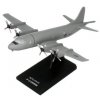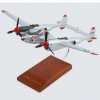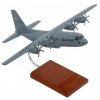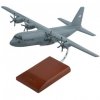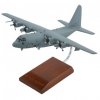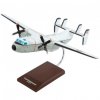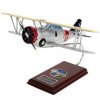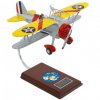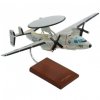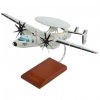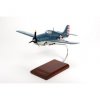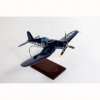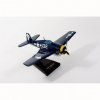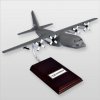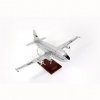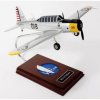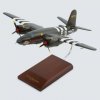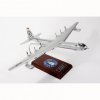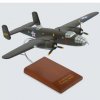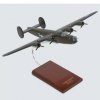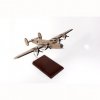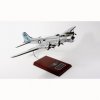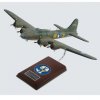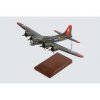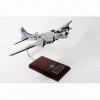"The JN-4 ""Jenny"" is a biplane trainer aircraft built and manufactured by Curtiss Aeroplane Company and was designed by Glen Curtiss. North America's most famous World War I aircraft is the Curtiss JN-4 since it was used to train beginner pilots. The JN-4's Canadian version was the JN-4 Can, also known as ""Canuck"". It was built with a control stick instead of the Deperdussin control wheel used in the regular JN-4 model, and has a more rounded rudder outline than the American version. The US version was called ""Jenny"" and has a twin seat dual control. The tractor prop and maneuverability of the Jenny made it ideal for initial pilot training. Most JN-4s built were unarmed, though some had machine guns and bomb racks for advanced training. After World War I, hundred JN-4s were sold in the civilian market, including the ones sold to Charles Lindbergh as his first aircraft. The Low speed of the JN-4 made it ideal for stunt flying and aerobatic displays. In the 1930s, some JN-4s were still operational. The primary users of the JN-4 were the United States Army Air Service and the Royal Flying Corps. "
Wing Span: 16.63
Length: 10.75
AJN4T
|
"The OS2U Kingfisher, manufactured by Vought, was the U.S. Navy's first catapult-launched monoplane observation floatplane. The OS2U first flew on March 1, 1938. The OS2U was a compact mid-wing monoplane, with a big central float and small stabilizing floats. Performance was modest, because of its light engine. The OS2U could also operate on fixed, wheeled, taildragger landing gear. The OS2U came in both float and land-based configurations, and served as observer aircraft, anti-submarine aircraft, and rescue aircraft. The Kingfisher's most important role during the war was as rescuer of downed aviators, and was second only to the PBY Catalina in this job. On November 11, 1942, a Kingfisher known as ""The Bug"", which had survived the attack on Pearl Harbor - rescued Captain Eddie Rickenbacker and the crew of the B-17 he was with after they crashed in the Pacific and survived 28 days in life rafts. After rescuing pilot CAPT. W.T. Cherry and four others on November 11, ""the Bug"" found Rickenbacker's raft the next day. Unable to fly all three survivors back at one go, LT. William F. Eadie, the pilot, taxied the airplane 40 miles through the open sea with Rickenbacker and one crewman lashed to the wings, while the most seriously-ill survivor was stuffed in the rear seat on the lap of ARM1 L.H. Boutte, the crewman. ""The Bug"" survived this mission and continued to fly throughout the war. "
Scale: 1/24 scale model
Wing Span: 18
Length: 15.25
AOS2UTE
|
"The North American Rockwell OV-10 Bronco was a special aircraft for counter insurgency (COIN) combat, developed in response to a specification approved by the United States Navy, Air Force and Army that was issued at the end of 1963. It is a fixed-wing, turboprop-driven light attack and observation aircraft with mission capabilities that resemble that of a fast, long-range and ultra-heavy attack helicopter. It can carry three tons of external munitions and loiter for more than three hours. The OV-10 is praised for its versatility, redundancy, high visibility cockpit, rear cargo compartment and ease of maintenance. Primarily a light attack and forward air controller aircraft, it has also performed armed reconnaissance, gunfire spotting and low-level aerial photography among many other roles. The specification in 1963 was based on a need for a new type of “jungle fighting” versatile light attack and observation aircraft. Some requirements of the aircraft were tandem seating, twin engines, basic aerobatic ability, and a capability of carrying at least 1,100 kg of cargo, various armament and external weapons. Eleven proposals were submitted from different companies, and in August 1964, the North American Rockwell design was selected. Seven prototypes were produced, and on July 16, 1965, the first OV-10 took wing. The Bronco was developed with much fanfare as a counter insurgency warplane. The OV-10 is a light and nimble aircraft that can fly close support. FAC and light attack missions were also common duties for the Bronco. "
Scale: 1/28 scale model
Wing Span: 17.25
Length: 17.75
AOV10
|
"The Lockheed P2V Neptune was a naval patrol bomber and anti-submarine warfare aircraft for the United States Navy (USN) between 1947 and 1978. It replaced the PV-1 Ventura and the PV-2 Harpoon and was successful in export, seeing service with several armed forces around the world. Development of the Neptune began early in World War II, but was considered a low priority compared to other aircraft in development at that time. It was not until 1944 that the program went into full swing. The first aircraft flew in 1945. Production began in 1946, and the P2V was accepted into service in 1947. A major factor in the design of the aircraft was ease of manufacture and maintenance, and this can be said to have played an important role in the P2V's long career and worldwide success. It was one of the first aircraft to be fitted in operational service with both piston and jet engines. The P2V-5, which first flew on December 29, 1950, was the most produced variant of the Neptune. The P2V-5 replaced the nose cone with a turret. It was mounted with an APS-20 radar and had enlarged wing tip fuel tanks. The aircraft was capable of carrying an 8,000 lb load of mines, torpedoes, bombs or depth charges and rockets. In addition to the US Navy, the P2V-5 served the military needs of Argentina, Australia, Brazil, Great Britain, The Netherlands and Portugal. During the Vietnam War, the Neptune was used by the USN as a gunship and patrol airplane. Under the Argentine Navy, the aircraft was used extensively during the 1978 Beagle Conflict, a border dispute between Argentina and Chile over the possession of the Picton, Lennox and Nueva islands and sea located south of Tierra del Fuego. During the Falklands War in 1982, the last two Neptunes in service played a key role of reconnaissance and aiding Dassault-Breguet Super Étendard aircraft, particularly on May 4 against HMS Sheffield. The lack of spare parts, caused by the US having enacted an arms embargo in 1977 due to the Dirty War, led to the Neptune's retirement before the end of the conflict."
Scale: 1/72 scale model
Wing Span: 17.38
Length: 16
AP02V5T
|
"The Lockheed P-2 Neptune is a naval patrol bomber and submarine warfare aircraft. The first P-2 Neptune flew in 1945 and production began in 1946. In 1947, it was accepted into service. P-2 Neptune was one one of the first aircraft which was accepted into service in 1947. Its early developments began in World War II. The Neptune was used by the US Navy during the Vietnam War and was also utilized by the US Army's 1st Radio Research Company (Aviation) located at Cam Ranh Bay. In 1982, during the Falklands War, the last two airframes in service, the P-111 and 2-P-112, had played a key role of reconnaissance and aiding Dassault Super Etenards, particularly on the May 4 attack against HMS Sheffield. P-2/P2Vs are currently employed in aerial firefighting roles by operators such as Aero Union and Neptune Aviation Services. The Neptune was succesful in export, being in service with several armed forces. The last Neptune variant produced by Lockheed was the P2V-7 (P-2H). Its upgrades include upgraded powerplant, jet pods standard,improved wingtip tanks, APS-20 search radar, early fitted with nose and tail turrets, but replaced with observation nose and MAD tail, dorsal turret also fitted early and replaced with observation bubble with 311 built."
Scale: 1/72 scale model
Wing Span: 17.38
Length: 16
AP02V7T
|
"The Lockheed P-3 Orion is a four-engine turboprop anti-submarine and maritime surveillance aircraft. In February 1959, the United States Navy (USN) awarded Lockheed a contract to develop a replacement for the aging P2V Neptune. The P-3 Orion, initially designated P3V, was based on Lockheed's successful L-188 Electra airliner and had its maiden flight on November 1959. It is primarily operated by the USN, the Japan Maritime Self-Defense Force, the Royal Australian Air Force and the Republic of Korea Navy. Despite its high performance, the P-3 has not been adapted into gunship, ground attack or aerial refueling tanker roles. Since its production in July 1962, it has had three major models: the P-3A, the P-3B and the P-3C. Paint schemes have changed from overall postwar blue, to white and gray in the 1960s and low-vis gray in the 1980s. The last P-3 Orion aircraft rolled off the production line at the Lockheed plant in April 1990. The P-3 Orion has been serving as the Navy's frontline, land-based maritime patrol aircraft since the 1960s. It still remains the USN's sole land-based anti-submarine warfare aircraft. Its long range and long loiter time have proved to be invaluable during Operation Iraqi Freedom as it was capable of viewing the battlespace while instantaneously providing that information to ground troops, especially the US Marines. "
Scale: 1/85 scale model
Wing Span: 14
Length: 16.25
AP03LVTR
|
"Starting in 1925 with the P-1, Curtiss built a long series of fighters carrying the name “Hawk”. Of the eight different P-6 models produced, the P-6E remains the best known. Originally designated the Y1P-22, it was later redesignated the P-6E because of the similarity to the other P-6 series airplanes. The P-6E was never used in combat, but it is perhaps the best-known of all the “between wars” Army pursuit aircraft. Despite its excellent performance, only 46 P-6E's were ordered because of the shortage of funds for the Air Corps during the austere days of the depression. The P-6Es served between 1932 and 1937 with the 1st Pursuit Group (17th and 94th PS) at Selfridge, and with the 8th Pursuit Group (33rd PS) at Langley Field, Virginia. Numerous accidents claimed at least 27 of the 46 aircraft delivered. As the P-6Es became obsolete, instead of receiving depot overhauls, they were allowed to wear out in service and were scrapped or sold. At least one survived into 1942 in United States Army Air Forces service. "
Scale: 1/20 scale model
Wing Span: 17.5
Length: 12.5
AP06
|
"The P-12 or F4B is a fighter aircraft manufactured by Boeing Aircraft Company. It was operated by the United States Army Air Corps and the Untied States Navy. P-12s were flown by the 17th Pursuit Group and the 20th Pursuit Group. There were older P-12s used by groups overseas such as the 4th Composite Group in the Philippines, the 16th Pursuit Group and the 18th Pursuit Group in Hawaii. In 1934-35, P-12 remained in service with first-line pursuit groups until it was replaced by the Boeing P-26. P-12 survivors were relegated to training duties until 1941, when most were grounded and assigned to mechanics' schools. The primary users and operators of the P-12 are the United States Air Force, United States Navy, Philippine Army Air Corps and the Royal Thai Air Force. Other operators of the P-12s are the Chinese Nationalist Air Force and the Philippine Army Air Force. There's a total of 366 P-12s built. "
Scale: 1/20 scale model
Wing Span: 12.25
Length: 18.13
AP12TE
|
"The American Boeing P-26 (Peashooter) was the first all-metal production fighter aircraft and the first pursuit monoplane used by the United States Army Air Corps. The diminutive Peashooter, as it became affectionately known by service pilots, was faster than previous American Combat aircraft, however it was also an anachronism. The Peashooter's wings were braced with wire, rather than with the rigid struts used on other airplanes, so the airplane was lighter and had less drag. Its initial high landing speeds were reduced by the addition of wing flaps in the production models. The P-26 flew 27 mph faster and outclimbed biplane fighters, that's why the Army ordered 136 production-model Peashooters. The first Boeing P-26 major combat mission was the Chinese Model 281, in what was the world's first air-interception and destruction of raiding monoplane aircraft. The P-26 remained in active service for many years. In November 1940, a full year after the start of World War II, the U.S. Army's entire fighter strength in the Philippines consisted of only 28 P-26's. Most of P-26 were destroyed in the first Japanese attacks, but two of them, flown by Philippine pilots, became the first American fighters to shoot down Japanese airplanes. Two original P-26s are known to exist. One is in the collection of the National Air and Space Museum, while the other has been owned for many years by the Planes of Fame Museum located in Chino, California. "
Scale: 1/24 scale model
Wing Span: 14
Length: 12
AP26T
|
"The Lockheed P-38 Lightning was an American fighter aircraft used by the US Air Force during the World War II. Developed to a United States Army Air Corps requirement, the P-38 had distinctive twin booms and a single, central nacelle containing the pilot and armament. The aircraft was used in a number of different roles, including dive bombing, level bombing, ground strafing, photo reconnaissance missions, and extensively as a long-range escort fighter when equipped with droppable fuel tanks under its wings. Designed by Engineer Clarence “Kelly†Johnson, the P-38 Lightning flew for the first time on January 27 1939. The P-38J was the fastest variant of the entire Lightning series--420 mph at 26,500 feet. Maximum speed at 5000 feet was 369 mph, 390 mph at 15,000 feet. Range was 475 miles at 339 mph at 25,000 feet, 800 miles at 285 mph at 10,000 feet, and 1175 miles at 195 mph at 10,000 feet. Maximum range was 2260 miles at 186 mph at 10,000 feet with two 250 Imp gall drop tanks. An altitude of 5000 feet could be attained in 2 minutes, 15,000 feet in 5 minutes, 10,000 feet in 7 minutes. Service ceiling was 44,000 feet. Weights were 12,780 lbs empty, 17,500 lbs normal loaded, 21,600 lbs maximum. Wingspan was 52 feet 0 inches, length was 37 feet 10 inches, and height was 9 feet 10 inches. Wing area was 327.5 square feet. Armament consisted of one 20-mm Hispano M2(C) cannon with 150 rounds plus four 0.50-inch Colt-Browning MG 53-2 machine guns with 500 rounds per gun. In addition two 500, 1000, or 1600-lb bombs or ten five-inch rockets could be carried on underwing racks. "
Scale: 1/40 scale model
Wing Span: 15.63
Length: 11.25
AP38BT
|
"The initial production of C-130 was the C-130A, having four Allison T-56-A-11 or -9 turboprops. A total of 219 C-130s were ordered and delivered by December 1956. The C-130J Hercules is the newest version of the Hercules. The aircraft features new Rolls-Royce Allison AE2100 turboprops with six-bladed composite scimitar propellers, digital avionics, reduced crew requirements, increased reliability and lower operating costs. The C-130J incorporates state-of-the-art technology to reduce manpower requirements, lower operating and support cost and life cycle cost savings compared to earlier C-130 models. The C-130 can accommodate 92 combat troops. It also flies at a higher cruise speed and lands in a shorter distance. The first delivery of the C-130J began in 1999. The USAF was the largest operator ordering the aircraft in increased numbers. The C-130J has several major improvements such as advanced two-pilot flight station, color multi-functional LCD and head-up displays, state-of-the-art technology reducing manpower requirements, low power color radar, digital moving map display, new turboprop engines with six-bladed, all composite propellers, digital auto pilot and improved fuel, environmental and ice protection systems. As of December 2006, a total procurement of C-130J reached 186 orders. There's another purchase of six C-130J aircraft upon request by the Indian Air Force. By mid 2007, the C-130J sales will be finalized. The C-130J will eventually replace the C-130Es and C-130Hs."
Wing Span: 16
Length: 12
AC130JT
|
"The Lockheed C-130 Hercules is a four-engine turboprop cargo aircraft and the main tactical airlifter for many military forces worldwide. Over 40 models and variants of the Hercules serve with more than 50 nations. The C-130J Super Hercules is the newest version of the Hercules and the only model still produced. Externally similar to the classic Hercules in general appearance, the J model is a very different aircraft. These differences include new Rolls-Royce Allison AE2100 turboprops with six-bladed composite scimitar propellers, digital avionics, reduced crew requirements, increased reliability and up to 27% lower operating costs. The C-30J is also available in a standard-length or stretched -30 variant. Lockheed received the launch order for the J from the RAF, who ordered 25 aircraft, with first deliveries beginning in 1999 as Hercules C. Mk 4 and Hercules C. Mk5 The largest operator for C-130J will be the USAF, who is ordering the aircraft in increasing numbers, although as of 2005 Congress announced C-130J acquisition would be dramatically cut. Current operators of the C-130J are United States Air Force, United States Marine Corps, U.S. Air National Guard, US Coast Guard, Royal Air Force, Royal Australian Air Force, Danish Air Force and the Italian Air Force. Total procurement of C-130J aircraft has reached 186 orders as of December 2006. The Hercules holds the record for the largest and heaviest aircraft to land on an aircraft carrier. The C-130J is a modification of the C-130H, undertaken by Lockheed Martin at company expense, with intended sales to the United States and various foreign markets. The C-130J modification includes a two-crew flight member station, upgraded Allison AE 2100D3 engines, enhanced performance and improved reliability and maintainability. The C-130 has been a part of some notable offensive operations including the Vietnam War, Indo-Pakistani War of 1965, Entebbe raid, Falklands War of 1982, Gulf War, Afghanistan invasion and Iraq invasion of 2003."
Wing Span: 16
Length: 13.75
AC130T
|
The C-130 Hercules is a four-engine turboprop military transport aircraft designed and built by Lockheed. The C-130 was originally designed as a troop, medical evacuation, and cargo transport aircraft. The versatile airframe has found uses in a variety of other roles, including as a gunship (AC-130), airborne assault, search and rescue, scientific research support, weather reconnaissance, aerial refueling, maritime patrol and aerial firefighting. It is now the main tactical airlifter for many military forces worldwide; over 40 models and variants of the Hercules serve with more than 60 nations.
This specific C-130 is the AC-130 Gunship variant.
This handcrafted model is painstakingly molded from pressure cast composite resin by our skilled craftsmen with a wealth of detail and makes a great gift for any veteran, aviation enthusiast or history buff.
Wing Span: 16
Length: 14
AC130TR
|
"The C-2 Greyhound was designed by the Navy to provide critical logistics support to aircraft carriers. The C-2 aircraft primary mission is Carrier Onboard Delivery or COD. The Greyhound replaced the piston-engined C-1 and was a derivative of the E-2 Hawkeye. The C-2 Greyhound shares wings and power plants with the E-2 Hawkeye but it has more widened fuselage with a rear loading ramp. The C-2 Greyhound has a vast range of communications and radio navigation equipment compatible for both military and civil airways on a worldwide basis. The communication equipments include HF, WHF and UHF. And for the radio navigation aids, it includes GPS, OMEGA, TACAN, dual VOR, UHF/DF, LF/ADF, weather radar, Doppler radar and two carrier approach systems. The C-2 Greyhound can deliver a payload of 10,000 lb. The cabin of C-2 can accommodate cargo, passengers or even both. The C-2 Greyhound is also equipped to accept litter patients in medical evacuation missions. The cage system of C-2 aircraft provides cargo restraint for loads during carrier launch or landing. The open ramp of C-2 Greyhound aircraft has the capability that allows airdrop of supplies and personnel from a carrier launched aircraft. The first two prototypes of C-2 Greyhound first flew in 1964. From the period of November 1985 to February 1987, the VR-24, operating with seven C-2 Greyhound depicted outstanding operational readiness while delivering two million pounds of cargo, two million pounds of mail and 14,000 passengers in support of the European and Mediterranean theaters. The C-2 Greyhound also provided support to the carrier battle groups during the operations of Desert Shield and Desert Storm. "
Scale: 1/48 scale model
Wing Span: 21
Length: 14.88
AC2AT
|
"The G-5/FF-1 Fifi is a naval fighter aircraft manufactured by Grumman and was designed by Leroy Grumman. The primary users and operators of the FF-1 are the United States NAvy, Spanish Republican Air Force and the Royal Canadian Air Force. In June 1933, FF-1s were delivered to Fighter Squadron VF-5B of the USS Lexington. In service, the FF-1 became known as Fifi. FF-1, together with the SF-1 were withdrawn from first-line US Navy squadrons by the end of 1936 and reallocated to reserve units. In the late 1940, most of the FF-1s are still in service. The FF-1 has a crew of 1. It has a maximum speed of 207 mph and a range of 685 mi. Armament includes 2 .30 M1919 Browning machine guns and a 100 lb bomb. It incorporates a Wright R-1820-78 Cyclone radial engine. There are 120 FF-1s built. "
Scale: 1/24 scale model
Wing Span: 17.75
Length: 12.25
ACFF1TE
|
"The F9 Sparrowhawk is a parasite fighter type designed to be deployed from a larger aircraft such as an airship or bomber and is ideal for service in the fighter complement of large rigid-framed airships for its small size. Its primary duty is reconnaissance. The F9 is carried by the US Navy airships USS Akron and USS Macon. The Akron was reported to have a complement of three F9s, while the Macon was found at its underwater resting place with four in its hangar. Currently, only one F9 Sparrowhawk still exists and it resides in the Smithsonian Institution's National Air and Space Museum. "
Wing Span: 15.25
Length: 21.13
ACSF9CTE
|
"The E-2 Hawkeye is an aircraft carrier-based tactical Airborne Early Warning (AEW) aircraft and is used for missions including surface surveillance coordination, strike and interceptor control, search and rescue guidance and communications relay. It was manufactured by Grumman Aerospace Corporation and Northrop Grumman. In 1964, after replacing the E-1, the Hawkeye has been the eyes of the fleet and has served the US Navy around the world. The E-2Cs has provided the command and control for successful operations during the Persian Gulf War. The original E-2C Hawkeye became operational in 1973 and has been through several upgrade programs since then. The E-2 aircraft served and have worked extremely effective with US law enforcement agencies in drug interdictions. During the late 1980s and the early 1990s, the E-2C Hawkeye has supported numerous naval engagements including the 1985 intercept of the aircraft containing the hijackers of the liner Achille Lauro. It has also participated in the strikes against Libya in 1986. The E-2C Hawkeye has a maximum speed of 374 mph and a range of 200 nauticla miles. It has a crew of five, including equipment operators. The primary users and operators of the E-2C Hawkeyes are the United States Navy, French Navy, Israeli Air Force and the Japan Air Self-Defense Force. "
Wing Span: 20
Length: 15
AE2CT
|
The Grumman E-2 Hawkeye is an American all-weather, aircraft carrier-based tactical Airborne Early Warning (AEW) aircraft. The twin turboprop aircraft was designed and developed in the 1950s by Grumman for the United States Navy as a replacement for the E-1 Tracer. The aircraft has been progressively updated with the latest variant, the E-2D, first flying in 2007.
Scale: 1/48 scale model
Wing Span: 20
Length: 15
AE2DT
|
"The EC-121 is an airborne early warning aircraft manufactured by Lockheed. The WV-2 is the main USN variant. From 1956 to 1954, WV-2s served in two barrier forces, each coast of the North American continent. Its aim was to extend early warning coverage against surprise attack of Soviet bomber and missile. On September 1965, Barrier Force operations were discontinued, however, Navy EC-121 operations continued until 1975 in four other squadrons. EC-121M was operated by VQ-1 and VQ-2 at NAS Atsugi, Japan and Naval Station Rota, Spain respectively. EC-121M, also known as Rivet Top, is a modified EC-121K and it carried the QRC-248 newly installed in the College Eye aircraft and has electronic interrogators capable of reading two additional Soviet transponders, the SRO-1 and SOD-57. EC-121M's electronics were custom-built. The most important upgrade was the installation of the highly secret Rivet Gym. The EC-121M Rivet Top prototype moved to Korat along with the College Eye Task Force in October 1967 and was scheduled to return to the United States in February 1968 but it remained at Korat until 1969. The primary users and operators of the EC-121 are the United States Air Force and the United States Navy. There's a total of 232 EC-121s built. "
Scale: 1/72 scale model
Wing Span: 19.25
Length: 20.25
AEC121MT
|
"The F4F-4 Wildcat entered the US Navy service in 1942. The carrier has six guns and folding wings that allow more people to get on board. Although it performed the most combat service during the early war days, F4F Wildcat was less popular with the American pilots because of the additional guns which caused the decrease of firing time as the same amount of ammunition was spread to it. The F4F-4 can accommodate only 1 crew. It has a length of 28 ft and 9 in or 8.8 m; wingspan of 38 ft or 11.6 m; height of 9 ft and 2.5 in or 2.8 m; and weight of 5,760 lb (when empty). F4F Wildcat has a maximum speed of 320mph and rate of climbing 1,950 ft/min. It also has six M2 Browning machine guns and two bombs. The F4F-4 broke the dominance of the Japanese Zero. Grumman became known as the Ironworks because of its strongly designed aircrafts that were tremendously damaged but were still able to fly home. "
Scale: 1/32 scale model
Wing Span: 10.75
Length: 14.25
AF4FT
|
"The F4U Corsair was a single-engine aircraft. It was conceived to be using the most powerful engine and the largest propeller a fighter aircraft ever had. The long propeller blades caused ground clearance problems, while the “W” shaped wings helped reduce the length required for the landing gear to provide good visibility on the sides. The F4U Corsair was called the “Ensign Eliminator”, a strong engine torque which didn’t make it an easy plane to land. The F4U Corsair aircraft went into production in 1942. There were different World War II aircraft variants and the F4U-1D Corsair was one of them. The F4U-1D was a fighter aircraft that served the US Navy during World War II and Korean War. It became the first United States single-engine production aircraft that was capable of reaching 400 mph. The F4U-1D was built in parallel with the F4U-1C, a variant that was in production in 1943 but entered the service in 1945. The F4U-1D Corsair was introduced in 1944. It was the Fighter-Bomber variant because compared to other variants it had a double payload of rockets which was exactly what the US Navy needed. It weighs 4100 kg/9040 lbs when empty and 6400 kg/14100 lbs when full; its engine is Pratt & Whitney R-2800 Double Wasp, 18 cylinders and power of 2200 hp; the aircraft’s armament is 6 x 12.7 mm (.50cal) machine guns in the wings; and max speed of 635 km/h and ceiling of 11280 m. "
Wing Span: 16.25
Length: 12.25
AF4U1NT
|
"The F4U Corsair has proven to the most capable capable carrier based fighter of World War II. In June 1942, the first production of the F4U-1s were delivered. The famous ""Black Sheep"" squadron of book and TV series fame immortalized the Corsair in the blue South Pacific skies. The F4U-4 was the definitive version of the F4U Corsair. It features a four-bladed Hamilton Standard Hydromatic propeller, a new cockpit layout, a clear view sliding hood, a two stage turbo-supercharged engine and under wing attachment points for 8-5 inch rockets or bombs. Most F4U-4s retained the standard armament of 6- .50 caliber wing mounted machine guns. The F4U-4 incorporates a Pratt & Whitney R-2000-18W. It has a maximum speed of 435 mph at 15,000 ft and a range of 1,005 miles at 214 mph at 15,000 ft. The Corsair was one of the great fighters of World War II and was proven much later in its service during the Korean War."
Wing Span: 19
Length: 15.25
AF4U4MTS
|
"The F4U Corsair was the result of a 1938 United States Navy (USN) requirement for a new carrier aircraft that could match the performance of the best land and carrier-based fighter planes. Designed by Rex Buren Beisel and manufactured by Chance Vought, it was made to carry the most powerful engine and largest diameter propeller ever built at that time. Although designed as a carrier fighter for the USN, concerns about its landing and visibility characteristics led it to be used initially by the United States Marine Corps (USMC), which operated on land-based runways. In March 1943, the Marines introduced the aircraft to its debut combat. Eventually it was put into service with the USN in January 1944, after the British proved that it was able to operate safely from carriers. The plane was not slow to prove its fighting ability and succeeded in gunning down 2,140 enemy aircraft while losing only 189 F4Us during World War II. Consequently, 24 Corsair pilots became air aces. The Corsair was given the nicknames “The Sweetheart of the Marianas” and “The Angel of Okinawa” by allied ground forces. The Japanese troops dubbed it “Whistling Death” because of the sound that it made during dive-bombing or strafing runs. The F4U-4 was the last variant to be produced during World War II, entering service just four months before the end of hostilities. With a rate-of-climb of nearly 4,000 feet per minute and a service ceiling of 41,500 feet, it was the Navy’s answer to the much improved Japanese fighters that were arriving in the Pacific. In addition to a new propeller, the F4U-4 had a completely redesigned cockpit, a new canopy for improved bubble effect, a new armor-plated bucket seat, and regrouped instruments. Improved fighter-bomber capabilities were made possible by putting rocket stations on the outer wing panels. The F4U-4 saw combat in Korea between 1950 and 1953. "
Wing Span: 16.25
Length: 12.25
AF4U4TE
|
"The Grumman F6F Hellcat was a fighter aircraft descended from the earlier F4F Wildcat, but was a completely new design sharing only a familial resemblance to the Wildcat. Some tagged it as ""Wildcat's big brother"". The name Hellcat was eventually retained in early 1943 for the sake of simplicity. The Hellcat proved to be the most successful aircraft in naval history, destroying 5,171 aircraft in service with the U.S. Navy and U.S. Marine Corps, plus 52 with the Royal Navy's Fleet Air Arm during World War II. The first production aircraft off the line, designated F6F3s, flew on October 3, 1942 with the type reaching operational readiness with VF-9 on USS Essex i February 1943. Two night fighter subvariants of the F6F-3 were also developed. The F6F-3E, converted from standard -3 frames, featured the AN/APS-4 radar in a fairing in the starboard wing. The later F6F-3N, first seen in July 1943, was fitted with the AN/APS-6 radar in a similar fairing. Hellcat night fighters had their first action in November 1943. The first real test of the F6F-3 against the Zero came a few months later in December when a groupof about a hundred Hellcats ripped into a like number of Japanese planes of which half were Zeros. In the ensuing battle, 28 of the Zeros were splashed for a total loss to the Hellcats of 3 planes. Many U.S. Navy pilots had good cause to refer to the Hellcat as the ""Aluminum Tank"". With its six.50 caliber Browning M2 machine guns, it could spit out a veritable hail of destruction which no Japanese adversary could hope to survive. After the war, Japanese pilots related their fear and dread each time they were engaged by the Hellcat. The Hellcat aircraft was rapidly phased out of front line service, retiring in 1954 as a night-fighter in composite squadrons. "
Wing Span: 12.25
Length: 16
AF6FT
|
"The date was September 1, 1943 when the Hellcat first saw action against the Japanese when fighters off the USS Independence (CVL-22) shot down a snooping seaplane. After which at 23rd of November, Hellcats engaged Japanese aircraft over Tarawa, shooting down a claimed 30 Mitsubishi Zeros for the loss of one F6F. On November 11, 1943, Hellcats were engaged in day-long fights with many Japanese aircraft including A6M Zeros, claiming more than 100 victories while losing few F6Fs over Rabaul, New Britain. The ""Thach Weave"" had developed into a formation tactic by that time. Each time an enemy fighter made a run at a section of US fighters, the pursued Hellcats would break towards the opposing formation that would cross over and force the Japanese to break off or expose themselves to the Hellcat's weapons. The ""wingman"" tactics started which are still used to this day, allowing less maneuverable US aircraft such as the Hellcat to deal with much more nimble Japanese opponents. Hellcats were involved in practically all engagements with Japanese air power from that point onward. Navy and Marine F6Fs flew 66,530 combat sorties (45% of all fighter sorties of the war, 62,386 sorties were flown from aircraft carriers) and destroyed 5,163 enemy aircraft (56% of all Naval/Marine air victories of the war) at a cost of 270 Hellcats (an overall kill-to-loss ratio of 19:1).The aircraft performed well against the best Japanese opponents with a 13:1 kill ratio against Mitsubishi A6M, 9.5:1 against Nakajima Ki-84, 28:0 against Kawanishi N1K-J, and 3.7:1 against Mitsubishi J2M during the last year of the war. In the ground attack role, Hellcats dropped 6,503 tons of bombs. "
Scale: 1/48 scale model
Wing Span: 10.5
Length: 8.5
AF6FTR
|
"The F-82 Twin Mustang is a heavy fighter manufactured by North American Aviation and was based on the P-51 Mustang. The F-82 was originally designed as a long-range fighter in World War II though its role was changed to night-fighting. On June 11, 1948, United States Air Force eliminated the P designation for pursuit and replaced it with F which pertains to fighter. The night fighter versions which were designated the F-82F/G required numerous modifications such as the removal of the right side cockpit to be replaced with a radar operator's position lacking flight controls. The most significant modification was the addition of a long radar pod attached to the underside of the center wing. The first F-82G that became operational was in late 1948. In mid 1949, F-82 became widespread and some of the E/F/G models were used by the United States Air Force. F-82Gs were also deployed to the 347th Fighter Group in Japan. The F-82G, though it missed its opportunity to fight in World War II, it distinguished itself during the Korean War. The F-82G has a crew of two. It has a maximum speed of 400 knots and a range of 1,950 nm. It incorporates 2 Allison V-1710-143/145 liquid-cooled V12 engines. The primary user and operator of the F-82 Mustang is the United States Air Force. There's a total of 270 F-82s built. Currently, there are three F-82s known to have existed. "
Scale: 1/32 scale model
Wing Span: 16.25
Length: 20.5
AF82TE
|
"The C-130 Hercules is a four-engine turboprop cargo aircraft and the main tactical airlifter for many military forces worldwide. Over 40 models and variants of the Hercules serve with more than 50 nations. In December 2006 the C-130 became the fourth aircraft (after the English Electric Canberra in May 2001, B-52 Stratofortress in January 2005 and the Tupolev Tu-95 in January 2006) to mark 50 years of continuous use with its original primary customer, the United States Air Force (USAF). The C-130 is capable of short takeoffs and landings from unprepared runways. The C-130 was originally designed as a troop, medical evacuation and cargo transport aircraft. The versatile airframe has found uses in a variety of other roles, including as a gunship, and for airborne assault, search and rescue, scientific research support, weather reconnaissance, aerial refuelling and aerial firefighting. The C-130H model has updated Allison T56-A-15 turboprops, a redesigned outer wing, updated avionics and other minor improvements. Later H models had a new, fatigue-life-improved, center wing that was retro-fitted to many earlier H-models. The H model remains in widespread use with the US Air Force (USAF) and many foreign air forces. Initial deliveries began in 1964 (to the RNZAF), remaining in production until 1996. An improved C-130H was introduced in 1974."
Wing Span: 16
Length: 12
AC1302T
|
"The Blue Angels, a U.S. Navy Flight Demonstration Squadron was formed to enhance the Navy and Marine Corps. It started in 1946 and is known as the first officially sanctioned military aerial demonstration team in the world. The Blue Angels fly three aircrafts in formation first and then four and now six per show. With the aerobatic stunts they perform, the group became known worldwide. The team was first led by Lt. Cdr. Voris. The team also operates a Marine Corps C-139T Hercules known as “Fat Albert”. It was designed to transport 25,000lbs of equipment and 45 personnel from one air show to another. As soon as Fat Albert arrives in the site, it is prepared for its dynamic demonstration. The widely known demonstration of Fat Albert is the JATO or Jet Assisted Take-Off. Whenever the aircraft sets off for a highspeed flat pass the words “United States Marine Corps” embossed across the Fat Albert’s skin is seen from below. The Fat Albert has the privilege to open each Blue Angel performance with its great demonstration flight. It is said to be operated by the US Marine Corps and its crew only consisted of USMC personnel."
Scale: 1/84 scale model
Wing Span: 19
Length: 14
AC130BA
|
"The HC-130 Hercules is a long-range surveillance and transport, fixed-wing aircraft that is used to perform search and rescue operations, marine environmental protection, military readiness, enforcement of laws and treaties including illegal drug interdiction, and International Ice Patrol missions, as well as cargo and personnel transportation. The aircraft took its first flight on August 23, 1954. The HC-130 is an extended-range, combat rescue version of the C-130 transport aircraft. Its main mission is to provide air refueling for rescue helicopters. The aircraft can surpass 2,600 miles in low-altitude flying with mission strength of up to 14 hours. The aircraft is equipped with a ten tube flare launching system and scanner windows. Guidance aids such as GPS, Inertial Navigation System, and radar improves the HC-130s performance during long range maritime patrols. "
Wing Span: 16
Length: 14
AC130CGT
|
"The C-130 Hercules Gunship has the record for being the heaviest and biggest aircraft to land on an aircraft carrier. When the Korean War started in June 1950 it illustrated that the performance of some transport aircrafts like the C-119 Flying Boxcars and C-46 Commandos were insufficient. In February 2 1951, the United States Air Force released a General Operating Requirement for a new transport aircraft. It was issued to aircraft companies like Boeing, Fairchild, North American, Northrop, Lockheed, Martin Company and Airlifts Incorporated. The transport aircraft would be capable of accommodating 92 passengers or 64 paratroopers, can fly with one engine stopped, and can reach a range of 1100 nautical miles. The Martin Company, Fairchild, Northrop and North American refused to join. The companies, who agreed, proposed nine designs. The Lockheed submitted two designs, Boeing submitted one, Douglas submitted three and the Airlifts Incorporated submitted one. The design proposals were a tight fight between the Lockheed Company and the Douglas. A 130 page proposal for Lockheed L-206 was submitted by the Lockheed team that was led by Willis Hawkins. The president and chief engineer of Lockheed, Hall Hibbard, noticed the proposal and gave it to Kelly Johnson. Hall Hibbard and Kelly Johnson signed the proposal and got the contract designated Model 82 in July 2 1951. In August 23, 1954, the YC-130 prototype made its first flight from the Lockheed plant in California. Its serial number was 53-3397 and it was the second prototype but the first to fly. Stanley Beltz and Roy Wimmer were the pilots of the prototype and Jack Real and Dick Stanton were the flight engineers. "
Wing Span: 19
Length: 14
AC130GS
|
"C-123 is a military transport aircraft manufactured and built by Chase aircraft and Fairchild Aircraft. The C-123 was famous for its service with various armed forces in Southeast Asia. The United States Air Force was the first recipient of the C-123 aircraft and was followed by the United States Coast Guard. USAF Demonstration team, Thunderbirds also used the C-123 for a time. They used the C-123 for search and rescue missions and C-123 was widely exportedin the USA under various aid programmes direct military stocks of the USAF. The C-123 was also known for his participation in Operation Ranch Hand defoliation operations in Vietnam. In the Vietnam War, some C-123s have been modified for roles. C-123s were also used in movies where scenes call for big planes, like Air America. A C-123 became the principal place of action films such as Con Air and Operation Dumbo Drop. The C-123 also has a small scene in Tomorrow Never Dies. In 2007, a C-123 was presented in a television advertising for Ford."
Wing Span: 18.5
Length: 12.75
AC123T
|
"The Douglas C-124 Globemaster II, also known as ""Old Shakey"", was a heavy-lift cargo military aircraft manufactured by the Douglas Aircraft Company in Long Beach, California. C-124s provided heavy airlift during the Korean War, Southeast Asia War and other important airlifts such as re-supply missions to Antarctica, refugee evacuation in the Congo and mercy flights to Morocco, Chile and elsewhere throughout the world following floods and other natural disasters. It could lift 33.560 kilograms (74,000 pounds) of cargo. Its double-decked cabin could also be fitted with 200 seats for troops, or with 123 litters for casualty evacuation. Flight crew was six. The C-124 first flew on November 27, 1949. This C-124C variant of Globemaster was manufactured by Douglas Aircraft Corporation at Long Beach, California, and delivered to the U.S. Air Force on May 4, 1955. The aircraft was assigned to the 15th Air Transport Squadron (Heavy) of the Military Air Transport Service (MATS) operating out of Dover AFB, Delaware. The C-124C featured uprated engines, an APS-42 weather radar with a distinctive nose ""thimble"" radome, and wingtip-mounted combustion heaters to provide cabin heating and wing de-icing. The radar and combustion heaters were retrofitted to most C-124As. At the type's peak in 1963, there were 377 C-124s in service with 20 transport squadrons. A total of 243 C-124C were built. "
Wing Span: 21
Length: 15.5
AC124T
|
"The BT-13 Valiant is a basic trainer aircraft of World War II manufactured by Vultee Aircraft and was designed by Richard Palmer. The BT-13 Valiant was flown by most American pilots during World War II. The BT-13 incorporates a more powerful engine and was faster and heavier than the primary trainer. The BT-13's maiden flight was on March 1939. The BT-13 had served its purpose well and it made a good aircraft to help transition many hundreds of pilots toward their advance trainers and fighters yet to be mastered. The BT-13 has a crew of two, for a student and instructor. It has a maximum speed of 180 mph and a range of 725 miles. It incorporates a Pratt & Whitney R-985-AN-1. The primary users and oerators of the BT-13 are the USAAF and the US Navy. Curently, some BTs including the BT-13s are still flying, though there were only limited numbers. Postwar, virtually all were sold as surplus for a a few hundred dollars each. The BT-13 production run outnumbered all other Basic Trainer types produced. "
ABT13
|
The Douglas C-47 Skytrain is a military transport aircraft that was developed from the Douglas DC-3 airliner. It was used extensively by the Allies during World War II and remained in front line operations through the 1950s with a few remaining in operation to this day.
This model is personally signed by William “Wild Bill” Guarnere from the Band of Brothers. He earned the nickname "Wild Bill" and lived up to it; he was terror on the battlefield and had a reckless attitude towards the Germans. Guarnere received the Silver Star for combat during D-Day, and was later decorated with two Bronze Stars and two Purple Hearts. Certificate of Authenticity included.
This handcrafted model is painstakingly built from Philippine mahogany by our skilled craftsmen with a wealth of detail and makes a great gift for any veteran, aviation enthusiast or history buff.
Scale: 1/62 scale
Wing Span: 18
Length: 13
AC047BBSS
|
"The C-47 Skytrain is a military transport based and developed from the DC-3 and was used extensively in world War II. It was manufactured by Douglas Aircraft Company. The C-47 has proven itself for the success of many Allied campaigns, including Guadalcanal, New Guinea and Burma with its ability to counter the mobility of the light-traveling Japanese army. The C-47s were also used to airlift supplies to the embattled American forces during the Battle of Bastogne. The C-47 became notable for flying The Hump from India into China. From 1946 to 1947, the C-47s saw service with the USAF Strategic Air Command. The C-47 was also used by the Americans during the initial stages of the Berlin Airlift and subsequently, it was replaced by the C-54. The C-47 also played various roles including the AC-47 gunships and the EC-47 for counterintelligence during the Vietnam War. The C-47 was also acquired by the Royal Canadian Air Force for search and rescue operations in 1940-1950. The C-47A is a variant of the C-47 with a 24-volt electrical system and there were 5,254 C-47As built. The primary users of the C-47 are the U.S. Army Air Force, U.S. Air Force and Royal Air Force."
Scale: 1/72 scale model
Wing Span: 16
Length: 11
|
"The Douglas C-47 Skytrain is a military transport derived from the DC-3 airliner. Considered the greatest airplane of its time, the DC-3 did not go unnoticed by one of Douglas's oldest customers, the United States Army. In 1940, a large order was placed for the military DC-3, which was designated C-47. By 1941, the US Army Air Force had selected the C-47 as its standard transport aircraft. A reinforced fuselage floor and the addition of a large cargo door were the only major modifications. For both airline and military use, the aircraft proved to be tough, flexible, and easy to operate and maintain. As a supply plane, the C-47 can carry up to 6,000 pounds of cargo. It can also hold a fully assembled jeep or a 37 mm cannon. As a troop transport, it can carry 28 soldiers in full combat gear. As a medical airlift plane, it can accommodate 14 stretcher patients and three nurses. The ubiquity of the Skytrain and its ability to operate from very rough forward airstrips made it familiar to Allied forces stationed around the world. It not only pioneered in-theater wartime routes but also served as a VIP transport, general personnel transport, troop carrier, cargo transport, paratroop assault transport, glider tug, airborne ambulance, air-sea rescue craft, and special operations aircraft. "
Scale: 1/72 scale model
Wing Span: 16
Length: 11
AC047ST
|
The Fairchild AC-119G Shadow was a twin-engine piston-powered gunship developed by the United States during the Vietnam War. By late 1967, the idea of the fixed-wing gunship had been proven so successful that the United States Air Force was having a difficult time keeping up with demand. These aircraft were primarily intended to replace the AC-47 in the close air support role. and were placed in the 71st Special Operations Squadron (SOW). They were used by the SOW from 1969–1971.
This handcrafted model is painstakingly built from Philippine mahogany by our skilled craftsmen with a wealth of detail and makes a great gift for any veteran, aviation enthusiast or history buff.
Wing Span: 18.75
Length: 14.75
AC119T
|
"The B-26 Marauder is an American Second World War twin engine medium bomber made by the Glenn L. Martin Company. In 1942, it was the first bomber in the Pacific Theater and Aleutian Islands. In 1946, it was the main offensive weapon of the Western Front by the Army Air Force. The B-26B sustained the lowest record of any fighter aircraft during the war. Its loss earned its unofficial nickname “The Widowmaker.” There were 5,288 aircrafts produced between the years 1941 to 1945. The Royal Air Force and the South African Air Force used 522 of them. The B-26B Marauder first came out in May 1942. It was the Marauder model that was built in large numbers. The difference between the B-26B from the earlier versions of the Marauder aircrafts is the two .50 inch machine guns with 1500 rpg placed in a stepped down tail position. It replaced the B26 and B-26A single hand-held guns. The guns are used manually by bead sight and ring. The gunner kneels down to find his targets and shoots his armaments. The ammos are on the cartridge belts standing on a pair of roller tracks. Each of the guns has 800 rounds. The overall length was increased to 58 feet and 3 inches because of its new tail position. The B-26C was similar to the B-26B. But all B-26C aircrafts were made with a larger wing. In fact, it was the first Marauder version to show with a larger wing. The wing was showed on the Omaha line before it showed on the Baltimore line. Its wing span turned to 712 feet and the area of the wing increased to 713 sq. ft. The modifications made, such as the additional weapons and armor and its enlarged wing and tail assembly, increased the weight by 1500 lbs. The top speed at 15,000 feet decreased to 282 miles per hour and cruising speed decreased to 214 miles per hour."
|
The A-26 Invader (designated B-26 between 1948–1965) was a United States twin-engined light attack bomber built by the Douglas Aircraft Co. during WWII. The B-26 was an unusual design for an attack bomber of the early 1940s period, as it was designed as a single-pilot aircraft. It was found to be a fast aircraft which was capable of carrying twice its specified bomb load.
This handcrafted model is painstakingly built from Philippine mahogany by our skilled craftsmen with a wealth of detail and makes a great gift for any veteran, aviation enthusiast or history buff.
Scale: 1/48 scale model
Wing Span: 16.5
Length: 13.5
AB26T
|
"The B-29 Enola Gay is the most complicated and propeller-driven bomber aircraft in the Second World War. The crew quarters are in the b29's pressurized compartments and the aircraft has highly developed armaments and avionics systems. It brought the first nuclear weapons used in the Pacific Theater war. Colonel Paul W. Tibbets Jr. dropped the first atomic bomb “Little Boy” in Hiroshima, Japan. The strategies for the first atomic bombing were set in August 1945. There were seven Superfortress aircrafts, three of which were to scout in front. One of them is to measure the blast of the bomb, and one photo plane is assigned to be the standby plane and the primary plane. The aircraft’s bombing is visual not radar. They used it to target the cities of Hiroshima, Kokura, Niigata and Nagasaki. Paul Tibbet’s own aircraft decided to name it “Enola Gay” after his loving mother. This gave him inspiration while he was building it. The Enola Gay allows 12 crewmen. In the afternoon of August 5, the Americans placed the bomb into the Enola Gay plane. The “Little Boy” atomic bomb is 12 feet long and 28 inches in diameter. Its power matches up 20,000 tons of TNT or approximately as much as two thousand Superfortress aircrafts could take. They started their engines in August 6, 1945 at 2:30 AM. Three hours after, they flew over Iwo Jima at dawn, where 5,500 Americans and 25,000 Japanese had died, so that the USAAF could use Iwo as an emergency landing field. They altered course and went northwest. They climbed to 30,700 feet for their bombing altitude. And at 8:30 they got a coded message saying Hiroshima was covered with clouds. At 9:15AM they dropped the ""Little Boy"" and made a 155 degree diving turn to the right. "
AB29ET
|
The Boeing B-29 was the most complex aircraft of the first part of the century. Service delivery of the B-29 began in 1944, with the first combat mission flown on June 5, 1944. This specific B29 model is painted as “Enola Gay,” which was the aircraft that dropped the atomic bomb “Little Boy” during the final stages of World War II.
This model is personally signed by Theodore “Dutch” Van Kirk, Enola Gay Navigator, and Morris Jeppson, Weapons Test Officer. Unfortunately Jeppson passed away in March 2010, leaving Van Kirk as the last living survivor from the crew. Certificate of Authenticity included.
This handcrafted model is painstakingly built from Philippine mahogany by our skilled craftsmen with a wealth of detail and makes a great gift for any veteran, aviation enthusiast or history buff.
Scale: 1/72
Wing Span: 23.75
Length: 17.00
AB29TSS
|
The B-29 Superfortress is a four-engine propeller-driven heavy bomber. It was one of the largest aircraft to see service in World War II and a very advanced bomber for its time, with features such as a pressurized cabin, an electronic fire-control system, and remote-controlled machine-gun turrets. Originally the B-29 was designed as a high-altitude daytime bomber, but it was used extensively in low-altitude night-time incendiary bombing missions. It was the primary aircraft used in the American firebombing campaign against the Empire of Japan in the final months of World War II and was used to carry out the atomic bombings that destroyed Hiroshima and Nagasaki.
This specific B-29 model is painted as "Lucky 'Leven", Clinton Rogers' airplane. He was part of the 73rd Bomb Wing and was stationed on the island of Saipan; Rogers and his crew flew 39 bombing missions over Japan and other Pacific islands.
This handcrafted model is painstakingly built from Philippine mahogany by our skilled craftsmen with a wealth of detail and makes a great gift for any veteran, aviation enthusiast or history buff.
Scale: 1/72 scale model
Wing Span: 23.75
Length: 17
AB29T
|
"Six pusher radial engines, mounted on the trailing edge of the wings, powered this big long-range SAC bomber. The D, ""burn and turn"", model was boosted by a pair of turbojet pods under the outer wings. A strategic bomb built by Convair for the United States Air Force. The Convair B36 Peacemaker is said to be the very first bomber that had intercontinental range and was also the first thermonuclear weapon delivery vehicle. The Peacemaker was the largest combat aircraft ever built. Its 230 foot wingspan is almost fifty percent longer than that of the huge B-52 that replaced it. The B-36 was one of America’s major deterrents to violence by a prospective adversary for eight years. From 1948 to 1958, the B-36 became part of the USAF Strategic Air Command. Major General Henry Arnold described the B-36 as the plane that could “fly the skin off any rivals”. The Peacemaker was also the first Cold War Bomber. Unlike any other aircraft that were seen in wars dropping bombs or firing an enemy, the B-36 was never seen in any of these actions. Instead, the Peacemaker was closest seen during the 1956 Hungarian Revolution and the Suez Crisis where it was dispatched to Turkey and Morocco. Thus, the Peacemaker is famous for never having fired a shot in anger and the plane that kept peace for ten long years. The B-36 Peacemaker was also involved in two aircraft collapse incidents, one was last February 13, 1950 in an unpopulated region of British Columbia and it was the first loss of an American Nuclear Weapon. The other one was on May 22, 1957 when a B-36 accidentally dropped a bomb on a deserted area while landing at Kirtland AFB in Albuquerque. A total of 388 B-36 Peacemakers were produced. The last one was built on August 1954. Then on June 29, 1955 the first B-52 was delivered to SAC. All Peacemaker models were delivered and converted to J models on which two jet engines were added to each wing. The last B-36 Peacemaker made its final flight in 1959."
AB36
|
The B-36 "Peacemaker" was a strategic bomber built by Convair and operated solely by the United States Air Force from 1949 to 1959. The B-36 was the largest mass-produced piston engine aircraft ever made. It had the longest wingspan of any combat aircraft ever built, although there have been larger military transports. The B-36 has a range greater than 6,000 mi and a maximum payload of 73,000 lb, which made it the world's first manned bomber with an unrefueled intercontinental range and set the standard for subsequent US intercontinental bombers. The B-36 was the primary nuclear weapons delivery vehicle of the Strategic Air Command, until replaced by the the jet powered Boeing B-52 Stratofortress.
This handcrafted model is painstakingly built from Philippine mahogany by our skilled craftsmen with a wealth of detail and makes a great gift for any veteran, aviation enthusiast or history buff.
Scale: 1/100 scale model
Wing Span: 27.75
Length: 20.25
AB36T
|
"The B-24 Liberator was a four-engined heavy bomber built by Consolidated Aircraft. It was produced in greater numbers than any other American combat plane during World War II and still holds the record as the most produced US aircraft. It was used by every branch of service during the conflict, earning a distingushed war record with its operations in the European, African, Pacific and Middle Eastern theaters. The PB4Y-1 Liberator was the navalized version of the B-24. The Liberator was notorious among American air crews for its tendency to catch fire from battle damage because of the placement of its fuel tanks and its lightweight construction. It was more difficult to fly as well, with more instruments and switches facing the pilot and more training required before proficiency was achieved. However, the Liberator excelled over other contemporary World War II heavy bombers in versatility. It had a long operating range, which led to it being used for various duties including maritime patrol and anti-submarine work, reconnaissance, tanker, cargo and personnel transport. Winston Churchill used one as his own transport aircraft. A total of 18,482 Liberators were built by September 1945. The US Navy acquired 977 PB4Y-1s, which were used in sinking U-boats, photographic reconnaissance and transport during the war. In 1944, two modified PB4Y-1s were used in Project Anvil as pilotless flying bombs to take out a German V-2 installation in occupied France. The aircraft were fitted with remote control gear, a forward-looking television camera and 25,000 lbs of explosives. "
AB24Y1
|
"The North American B-25J Mitchell was an American twin-engined medium bomber developed by the North American Aviation. The aircraft was used with devastating effect against German and Japanese targets in every battle scenario of World War II. The B-25J Mitchell was named General Billy Mitchell, an American general known as one of the most famous pilots in American airpower history. He was called the Father of the U.S. Air Force. The B-25 Mitchell took its first flight on August 19, 1940. It is powered by two Wright R-2600-9 Cyclone engines which delivered an amount of 3,400 horsepower. The aircraft's highest speed is 355 mph. The original airplane had difficulties during bombing runs, so the dihedral in the outer wing panels was eliminated on the 10th B-25 version onwards. The B-25J has 4,318 units. It is considered to be the most widely produced version of the Mitchell. The B-25 saw many modifications during its operating service. The series ran from the B-25A to B-25J, each type seeing variations to increase its firepower. The first 25 were armed with a. 30-caliber Browning in the nose and one at each waist position. For security, the tail of the aircraft sported a .50-caliber Browning. A Plexiglas nose and a turret gunner originated with the B-25B. The B-25G also had a retractable belly turret. "
AB25EST
|
The B-25 Mitchell was an American twin-engined medium bomber manufactured by North American Aviation. The B-25 first gained fame as the bomber used in the 18 April 1942 Doolittle Raid, in which 16 B-25Bs led by Lieutenant Colonel Jimmy Doolittle attacked mainland Japan, four months after the bombing of Pearl Harbor. The mission gave a much-needed lift in spirits to the Americans, and alarmed the Japanese who had believed their home islands were inviolable by enemy forces. It was used by many Allied air forces, in every theater of World War II, as well as many other air forces after the war ended, and saw service across four decades.
This specific B-25 is painted in the Doolittle Raiders' paint scheme. The Doolittle Raid was one of the most daring raids on the empire of Japan during World War II. This attack, America’s first retaliatory strike, would be so decisive that it would ultimately lead to the turning point of the war by provoking the Japanese counter attack and defeat at Midway in June of that same year.
This handcrafted model is painstakingly built from Philippine mahogany by our skilled craftsmen with a wealth of detail and makes a great gift for any veteran, aviation enthusiast or history buff.
Scale: 1/48 scale model
Wing Span: 16.5
Length: 13.5
AB25JDT
|
"The B-24 Liberator is an American heavy bomber built by Consolidated Aircraft. It was produced in great numbers during World War II and was used by many Allied air forces and every US branch of service during the war. The B-24 Liberator was first deployed to the United Kingdom to utilize its long-range capabilities. In June 1942, American B-24s entered combat with a raid of 13 aircraft launched from Egypt which targeted the German-built synthetic oil refinery at Ploisti, Romania. Though it was considered unsuccessful. On August 1, 1943, 178 B-24s attacked Ploesti again and 53 failed to return. Liberator squadrons were deployed to theaters in Africa, Europe, the Atlantic, India and the Pacific. In 1942 to 1943, B-24's production increased dramatically. The B-24's long operating range made it suitable for maritime patrol, antisubmarine, reconnaissance, tanker, cargo and personnel transport. By September 1945, there were 18,482 B-24 Liberators built. The B-24J is very similar to the B-24H, although the defensive improvements made in the B-24H weren't incorporated in the B-24J. The B-24J featured an improved autopilot and a bombsight of the M-1 series. B-24H sub-assemblies made by Ford and constructed by other companies and any model with a C-1 or M-1 retrofit, were all designated B-24Js. B-24J has a crew of 7-10. It has a maximum speed of 290 mph and a cruising speed of 215 mph. It has 10x 0.50 in M2 Browning machine guns. "
AB24ODT
|
"This B-24 Liberator was operated by the 15th Air Force in Cyrenaica and flew on raid to the Ploesti oilfieds on August 1, 1943. The bombers were painted in desert pink. The B24D Liberator was the first liberator that was put into mass production by Consolidated. More than 2,700 B-24D was produced. The first production of B-24D was almost similar to B-24C and was delivered to the Army Air Corps. The B-24D’s long deep fuselage enabled the Army Forces to settle in to a continuous diversity of attacks. The B-24D served commendably not only as bombers but also as photo reconnaissance aircraft, anti submarine aircraft and as cargo planes too. In 1943, The B24D Liberator replaced the B-17 Flying Fortress as the heavy bomber in the South Pacific. The liberator was flown by the Army and Navy Aircrews. Five months after the production of the B-24D in San Diego, Consolidated began a new production of the B24D in Forth Worth. The Liberator attained recognition during the WWII as one of the Army Air Force’s most reliable long range bombers. "
AB24PR
|
The B-24 Liberator was an American heavy bomber, designed by Consolidated Aircraft of San Diego, CA. The B-24 was used in World War II by several Allied air forces and navies, and by every branch of the American armed forces during the war, attaining a distinguished war record with its operations in the Western European, Pacific, Mediterranean, and China-Burma-India Theaters.
This specific B24 is painted as "Utah Man" or Walter Stewart's airplane. Stewart's most historic mission was the low-level bombing mission to the oil refineries of Ploesti Romania during Operation “Tidal Wave” in August 1943. During the mission, Stewart was assigned as Deputy Lead of the 93rd Bombardment Group because of his reputation and experience. Five groups took off from Libya for the 2,000-mile round trip to their target, which was supplying nearly 1/3 of all oil used by Nazi Germany. The attack turned to chaos with bombers from the different groups attacking from all quadrants, but the oil refineries were severly damaged. Of the 178 aircraft that took off on the most decorated mission of World War II, 54 were shot down; 532 of 1,726 men did not return. Lt. Stewart’s plane, named “Utah Man,” came back with 365 holes in it. Certificate of Authenticity included.
This handcrafted model is painstakingly built by our skilled craftsmen with a wealth of detail and makes a great gift for any veteran, aviation enthusiast or history buff.
AB24PRSS
|
"The B-24J Liberator is one of the variants of the liberators and the largest amount of liberators ever produced. All in all there are 6,678 B-24Js produced. The aircraft is somewhat similar to the B-24G and H models. The only difference between the B-24J and the two models is the autopilot and bombsight feature. The defensive modifications completed in the B-24H were not included in the B-24J model. The B-24J has an improved Type C1 autopilot and an M-1 series bombsight. In 1944, the Army predicts a lesser amount of demands for Liberators. They regulated that the three plants be freed up for new purposes. In 1945, only Ford-Willow Run and Convair-San Diego continued developing B-24 aircrafts. The B-24J Liberator is a heavy bomber aircraft that was produced in large numbers during the Second World War. It served war in the Pacific, Middle Eastern, European and African theaters and gained a record in its action. "
AB24ST
|
"The Boeing B-17 Flying Fortress or the so called ""Sentimental Journey” is a four-engine heavy bomber aircraft developed for the U.S. Army Air Corps (USAAC). The B-17 aircraft was manufactured by Boeing. It has eliminated its competitors and has met the Air Corps' expectations to compete against Douglas and Martin for a contract to build 200 airplanes. The Air Corps was impressed with the B-17s' even though Boeing had lost the contract due to the prototype's crash. This became the reason for the U.S. Army Air Corps to order 13 B-17s. The B-17 Flying Fortress was chosen as the first truly mass-produced large aircraft that participated in full-scale production. The aircraft has then evolved into various design upgrades which started from B-17A to G. On March 13, 1945, the B-17 Flying Fortress ""Sentimental Journey"" was accepted by the U.S. Army Air Corps. The aircraft was produced too late to provide service for the European war. Therefore, it was assigned to the Pacific theater until the end of the war. The aircraft was removed from safety in Japan and was assigned to be a photo-mapping airplane in Clark Field, Manila. The aircraft has flown to all areas of the Pacific for almost three years during the development of the RB-17G."
|
"B-17F Flying Fortress had a nickname which was Memphis Belle during the Second World War. It became the first U.S. Army Air Forces heavy bomber to complete 25 missions over Europe and return to the United States. In September 1942, the Memphis Belle was delivered to the 91st Bomb Group at Dow Field, Bangor, Maine and was deployed to Prestwick, Scotland on September 30. On October 14, the Memphis Belle deployed to its permanent base at Bassingbourn, England. Captain Robert Morgan's crew had flown 25 combat missions with the 324th Bomb Squadron, all but four in the Memphis Belle and on May 19, 1943, Memphis Belle flew its 25th and last mission with a different crew to Kiel, Germany. On JUne 8, 1943, Memphis Belle was flown back to the United States by Morgan's crew for war bond tours. After the war, Memphis Belle was saved from reclamation at Atlus, Oklahoma, where it had been consigned since August 1, 1945, by the efforts of the mayor of Memphis, Walter Chandler. The city bought the plane for $350. In JUly 1946, the plane was flown to Memphis and was stored until summer of 1949 when it was placed on display at the National Guard armory. In the 1980s, it sat out-of-doors, slowly deteriorating due to weather and occasional vandalism. A fictionalized version of the Memphis Belle was made in the 1990 wherein a former firebomber B-17G-85-DL, serial 44-83546, registered N33703G was converted into a B-17F configuration by removing its chin turret and it continued making air show appearances in that guise. The B17, which was owned by David Tallichet, now carries the historic markings found on the actual Memphis Belle. It currently operates out of Floyd Bennett Field, New York. There were other planes also nicknamed as Memphis Belle, such as a Republic F-105D-10-RE Thunderchief (60-0504) from the 357th Tactical Fighter Squadron of the 355th Tactical Fighter Wing, a General Dynamics FB-111 (68-0267), two Boeing B-52 Stratofortress have the name Memphis Belle B-52G (59-2594) was named as Memphis Belle III and took part in the 1991 Gulf War and the first B-52H (60-0001) was named Memphis Belle IV which has seen action in both Iraq and Afghanistan, a Lockheed C-141 Starlifter (67-0024)n became the Memphis Belle V and a Lockheed C-5 Galaxy (69-0025) was named as Memphis Belle X."
AB17MBTS
|
"The Boeing B-17 Flying Fortress is an American four-engine heavy bomber aircraft developed for the U.S. Army Air Corps (USAAC). The B-17 Flying Fortress went on to enter full-scale production and was considered the first truly mass-produced large aircraft, eventually evolving through numerous design advancements, from B-17A to G. The B-17 was primarily employed in the daylight precision strategic bombing campaign of World War II against German industrial and civilian targets. The B-17 also participated, to a lesser extent, in the War in the Pacific.From its pre-war inception, the USAAC touted the B-17 Flying Fortress aircraft as a strategic weapon; it was a potent, high-flying, long-ranging bomber capable of unleashing great destruction yet able to defend itself. The B-17 established itself as a superb weapons system, dropping more bombs than any other U.S. aircraft in World War II. Of the 1.5 million tons of bombs dropped on Germany, 500,000 were dropped from B-17s. Generally considered the defining B-17 design, all changes made in the B-17F production run were incorporated into the final version, the B-17G Fortress. 8,680 B-17G Fortress were built. Eighty-five B-17G Fortress were transferred to the Royal Air Force, where they were used as the Fortress III. They operated with two squadrons of Bomber Command's No. 100 Group RAF at RAF Sculthorpe, where they were used for electronic countermeasures missions to confuse and jam enemy radar. They were also used as decoys during night bombing attacks. They took part in various such operations until they were disbanded in 1945 July. "
AB17ODT
|
The Boeing B-17 Flying Fortress is a four-engine heavy bomber aircraft developed in the 1930s. The B-17 was primarily employed by the United States Army Air Forces (USAAF) in the daylight precision strategic bombing campaign of World War II against German industrial and military targets. From its pre-war inception, it was touted as a strategic weapon; it was a potent, high-flying, long-range bomber that was able to defend itself, and to return home despite extensive battle damage. The B-17 quickly established itself as an effective weapons system, dropping more bombs than any other U.S. aircraft in World War II.
This specific B-17 model is painted as "Sentimental Journey". Her nose art features Betty Grable, the number-one pin-up girl of the World War II era. "Sentimental Journey" is still in flying condition and is owned by the Commemorative Air Force and is regularly flown to airshows around the country.
This handcrafted model is painstakingly built from Philippine mahogany by our skilled craftsmen with a wealth of detail and makes a great gift for any veteran, aviation enthusiast or history buff.
Scale: 1/62 scale model
Wing Span: 19.9
Length: 14.3
AB17SJ
|
The Boeing B-17 Flying Fortress is a four-engine heavy bomber aircraft developed in the 1930s. The B-17 was primarily employed by the United States Army Air Forces (USAAF) in the daylight precision strategic bombing campaign of World War II against German industrial and military targets. From its pre-war inception, it was touted as a strategic weapon; it was a potent, high-flying, long-range bomber that was able to defend itself, and to return home despite extensive battle damage. The B-17 quickly established itself as an effective weapons system, dropping more bombs than any other U.S. aircraft in World War II.
This handcrafted model is painstakingly built from Philippine mahogany by our skilled craftsmen with a wealth of detail and makes a great gift for any veteran, aviation enthusiast or history buff.
Scale: 1/62 scale model
Wing Span: 19.9
Length: 14.3
AB17TTS
|
The B-24 Liberator was an American heavy bomber, designed by Consolidated Aircraft of San Diego, CA. The B-24 was used in World War II by several Allied air forces and navies, and by every branch of the American armed forces during the war, attaining a distinguished war record with its operations in the Western European, Pacific, Mediterranean, and China-Burma-India Theaters.
This handcrafted model is painstakingly built by our skilled craftsmen with a wealth of detail and makes a great gift for any veteran, aviation enthusiast or history buff.
Scale: 1/62 scale model
Wing Span: 21.3
Length: 12.8
AB24DTS
|
Take home Emma Frost as she stands clear!
San Diego Comic-Con 2011 exclusive!
Limited edition!
Exclusive clear form! Grab this exclusive Kotobukiya Bishoujo statue of Emma Frost as The White Queen! Standing eight-inches tall atop an environmental display base, the X-men mutant is highlighted by a bishoujo-styled face along with Frost's flowing hair and cape. Be sure to add The White Queen to your Marvel X Bishoujo Collection of iconic super heroines and villains! Limited edition of only 1,500 pieces!
|
Green Lantern Bearbrick that lights-up!
Watch the movie, pick up the Bearbrick!
Limited edition San Diego Comic-Con 2011 Exclusive!
As Green Lantern takes to the big screen this Summer, be sure to grab this exclusive Bearbrick equipped with a light-up lantern! Limited edition of only 1,500 copies!
|
"The AD-6 (A-1H), also known as “SPAD (an acronym, as in ""Single Place Attack, Douglas"")”, was a U.S. single-seat attack bomber manufactured by Douglas Aircraft Company. The prototype of the Skyraider was first flown on March 18 1945 then it was first introduced in the year 1950s. The A1 Skyraider first saw combat in the Korean War, where its long loiter time and heavy load-hauling capability gave it a distinct utility advantage over the jet aircraft of the time. A total of 3,180 Skyraiders were built during its last production in 1957. The A-1H Skyraider version of the A1 Skyraider is equipped with four 20 mm guns. The guns were installed on the wings of the aircraft. The A-1H Skyraider can carry any different types of bombs, gun pods, mines on its external wing stations. It can also have fuel tanks for long range missions. The A-H was one of the last versions of Skyraider aside from the AD-7. A-1H Skyraider is a single-seat aircraft that have three dive breaks. A total of 713 were built. It has a maximum speed of 320 miles per hour and is equipped with 4 x 20 mm of cannons. The primary mission of the A-1H Skyraider is to support the ground forces of the Army. Its compartment in the middle can be equipped with passenger seats and for carrying heavy cargo. In Vietnam War, the United States Army Air Force used it mostly on air support role. It was efficient in giving some back up for rescue tasks. In September 1 1968, Colonel William A. Jones flew an A-1H Skyraider. He was awarded with a Medal of Honor because he had returned to his base and informed the position of a downed flight crew member even he suffered on burns and have damages in his attack bomber. "
AA1NT
|






